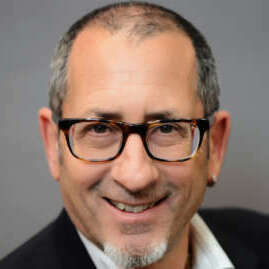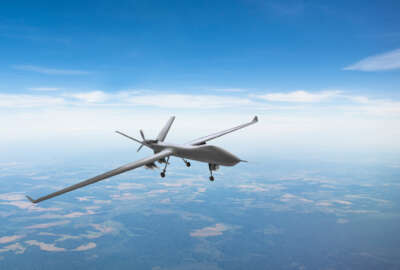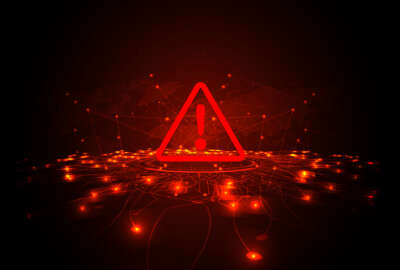Sponsored by Noblis
Homeland Security Science & Technology Directorate prepares for an unpredictable world
The Homeland Security Department’s 22 operating divisions deal with a world that’s changing both rapidly and non-linearly. Dr. Dimitri Kusnezov, DHS’s...
The Department of Homeland Security Department’s (DHS) 22 operating divisions deal with a world that’s changing both rapidly and non-linearly. They depend on the Science and Technology (S&T) Directorate to make things incrementally better for current concepts of operations.
Beyond that, the directorate “also has to provide some clarity into whether tomorrow is going to be different and whether the models we have today, in how we approach everything we do, scale to where the world is going,” said Dimitri Kusnezov, DHS’s undersecretary for science and technology.
Balancing the needs of the immediate while understanding where things are headed long term – that’s “the balancing act we have to manage,” Kusnezov said in an interview.
He also balances staff-performed work versus research done externally through contracts and grants, given the difficulty of pulling highly specialized people into the federal government as employees for finite projects.
In the national security domain, Kusnezov said, the number of world-changing technologies, coupled with their mass availability, makes for unprecedented challenges.
“And it’s not just drones or unmanned aerial vehicles and then countering them.” he said. “It’s not just gene splicing, which is done in high school these days. It’s nanoscience. It’s additive manufacturing, also done as home projects. It’s artificial intelligence (AI) and machine learning. It’s quantum technologies.”
To make sense of it all, Kusnezov said it’s useful to look at science and technology separately. After all, he said, some long-standing sciences haven’t produced much technology quite yet, like quantum. Some technologies, like AI, develop without much new science.
“So in my worldview of this, they’re intertwined, but they’re distinct, and they can work independently of each other,” he said. He added, “I see science as about decisions, closing important knowledge gaps, adding clarity to where we can go in the future. What should we be worried about?” Technology, he said “is about actions. How do we enable those who need to rely on it? How do we solve problems?”
Because activities on both fronts, science and technology, offer limitless avenues to pursue, I asked Kusnezov how the S&T Directorate chooses what to do.
Practical technology
Fundamentally, he said, S&T gets its demand signals from the operating components. Incremental improvements in technology already in use are often best left to industry. Where the directorate focuses “is trying to address whether there is a long-term viability for this technology that can be maintained, upgraded, that can live in the private sector,” Kusnezov said. “You have to have the lash-up with the private sector and a handoff on some path of commercialization.”
He added, “It’s not just identifying what the needs are from the components, but also what Customs and Border Protection, or the Transportation Security Administration or Federal Emergency Management Agency need.”
Still, S&T must be responsive to the components. In fact, Kusnezov said, “we get our priorities from the components directly. Coast Guard will tell us for example, these are the top X number of things that we worry about.” He said each S&T works with each component throughout the year.
“They identify priorities, we dissect them,” Kusnezov said. “At S&T, we look to see which ones of those are amenable to technology solutions, and which ones of these exist already as solutions.”
He added, “But at the end of the day, we really have to worry about the future technologies, and that they have a livelihood of their own” that industry will eventually sustain.
Often a technology developed in an entirely different domain will adapt to homeland security needs. He cited CT scanners, which started in the medical domain, but now screen for explosives and weapons in transportation.
A challenge for technology assessment, Kusnezov said, comes from the way bad actors are blending them together to create entirely new functionality.
“And so we have to be armed with the right kinds of technologies to counter things, you know, with borders, with smuggling, with cryptocurrency and fentanyl and child exploitation,” Kusnezov said. “It requires foresight, knowing what adversaries are doing, and ensuring the DHS components have the tools to keep pace.”
Partnering for human capital
Kusnezov, a theoretical physicist, was an academic for the first part of his career.
“But I decided to come into government right around 9/11,” he said. He’s worked at the National Nuclear Security Administration on the nuclear weapons stockpile, and later for the Energy Department.
For its own human capital needs, Kusnezov said the blend of employees and contractors at the S&T Directorate seems about right. Plus, S&T can draw on talent from at least one other large research department.
“From the DHS Act, we also have unique authorities to work with Department of Energy National Laboratories,” Kusnezov said, “which really cover a broad landscape of skill sets, specialties and unique facilities.”
Like so many other federal components, the S&T Directorate is exploring ways to use artificial intelligence and machine learning to reduce mundane or repetitive work. More specific to its mission, Kusnezov said, S&T is looking to AI to discern evidence of crimes such as child exploitation or war atrocities in online video and photography, often on the dark web, pursuant to preventing perpetrators from entering the country.
“There are people out there that look at content which is just horrific, as part of the job,” Kusnezov said. “Ways to somehow automate the extraction of content, for example, so that the stresses on people can be minimize, is really important because the crimes are real and the impacts on people are real.”
“AI will also grow in importance”, he said, “as everyday objects take on intelligence and connectivity through 5G and 6G telecommunications.”
“And so the space of adversarial AI is something I think about a lot,” Kusnezov said. “Because unlike cyber security, where you know the goal of an adversary is to actually inject code and instructions into a system. In the AI space, you don’t even have to touch a system to subvert its intent.”
He added, “The question for the world we’re heading into, is how do we think about protecting the nation, part of the mandate of DHS, in this future world? We have a little bit of latitude and time to think about it. What should we be worried about? And what are the consequences?”
The challenge for S&T, as for the Homeland Security Department itself, will be to remain agile and responsive to threats, the edges of which are not yet clear.
Kusnezov said, “You know, I’m not a fan of strategic plans.” Why not? “In a world that I view is nonlinear and changing in ways that we can’t predict, it doesn’t make sense to me to have a noted end point when I don’t know what we’re trying to go towards.” Rather than craft plans, Kusnezov said, he’d rather ask, “How can we be more versatile towards a changing world?”
To listen to the full show:
Copyright © 2025 Federal News Network. All rights reserved. This website is not intended for users located within the European Economic Area.






